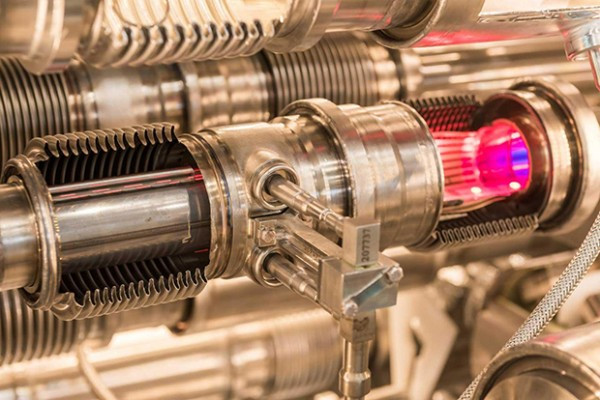Cern Detects Two New Sub-atomic Particles Heavier Than the Proton

Two new sub-atomic particles have been detected by the particle accelerator at Cern in Geneva.
The baryon particles - Xi_b'- and Xi_b*- are unique in their constituent quarks, says Steven Blusk, associate professor of physics from Syracuse University who discovered them.
The two newly discovered particles differ in their mass, which is approximately six times more than that of the proton thanks to the heavyweight b quark and the particle's angular momentum.
Both the new particles contain a beauty [b] quark, a strange [s] quark and a down [d] quark.
One of the newly discovered particles is heavier than the other, owing to the alignment of its quarks.
The lighter of the two would have missed detection if it had been even a little bit lighter, said Blusk.
Blusk works with the theory of Quantum Chromodynamics, which describes the interaction of quarks.
The work was carried out at the facility's LHCb detector between 2011 and 2012. The findings have been submitted to the journal Physical Review Letters.
Colours and flavours
A baryon is a subatomic particle made up of three quarks, bound together by strong force. Two known baryons are the proton and neutron, which combine with the electron to form all the known elements of the periodic table.
The physics of the atoms has gone beyond proton, neutron and electron to their constituent quarks which come in different 'flavours' and 'colours'. The flavours include up/down, charm/strange and top/bottom while the colours include blue, red and green.
The colours and flavours allow for Pauli's rule that no two particles can occupy the same position at the same time.
Different combinations of quarks give rise to different particles.
While quarks have not been seen so far, their presence has been validated by experiments.
The quarks and electrons are held by strong electromagnetic forces. So far, all matter can be broken down to any of the known 12 building blocks – six quarks and six leptons.
The LHCb experiment at Cern seeks to identify new forces and particles, in addition to those already known and codified in the Standard Model of particle physics.
The Big Bang that led to the creation of the universe 14 billion years ago saw both, matter and anti-matter, produced but a second later, all anti-matter disappeared.
How that happened, and why, are some of the questions the Cern experiment aims to find out. In fact, the collider threw up recently an exotic particle which cannot be explained by the quark theory.
Discoveries from the accelerator have been as sensational as the discovery of the 'God's particle' or the Higgs boson, which is said to confer mass on all particles, the discovery of which continues to be questioned.
The collider is going through an upgrade to enable operation at higher energies from early 2015.
© Copyright IBTimes 2025. All rights reserved.





















